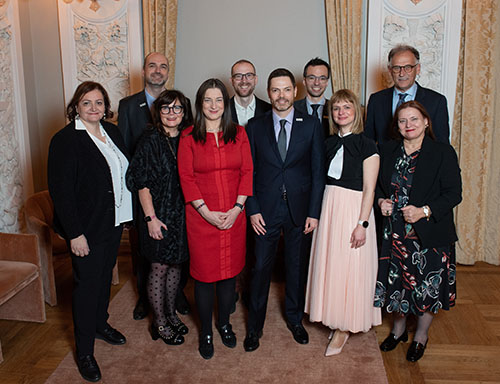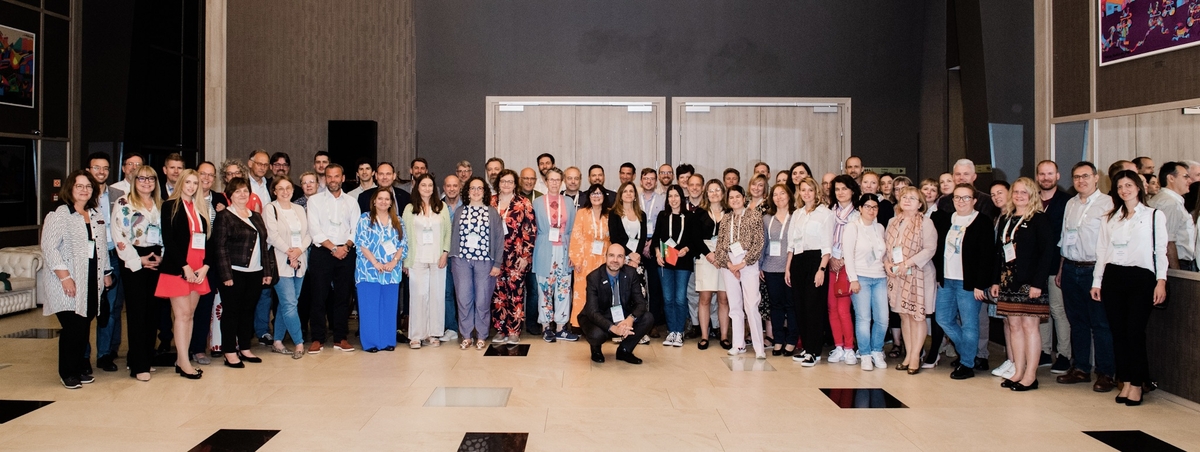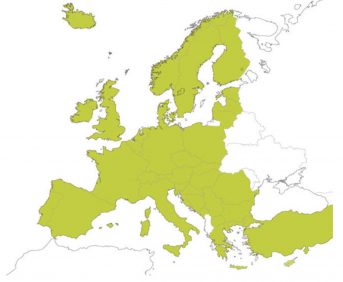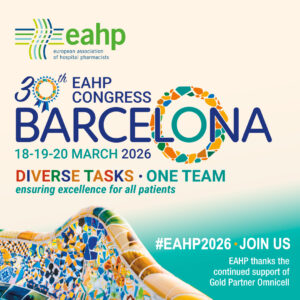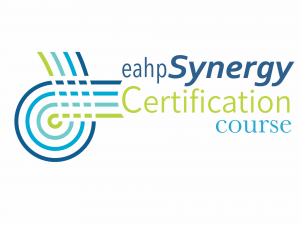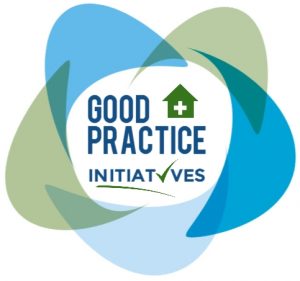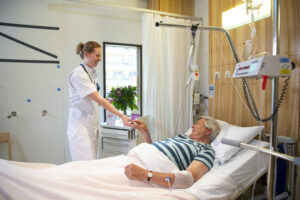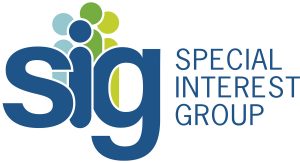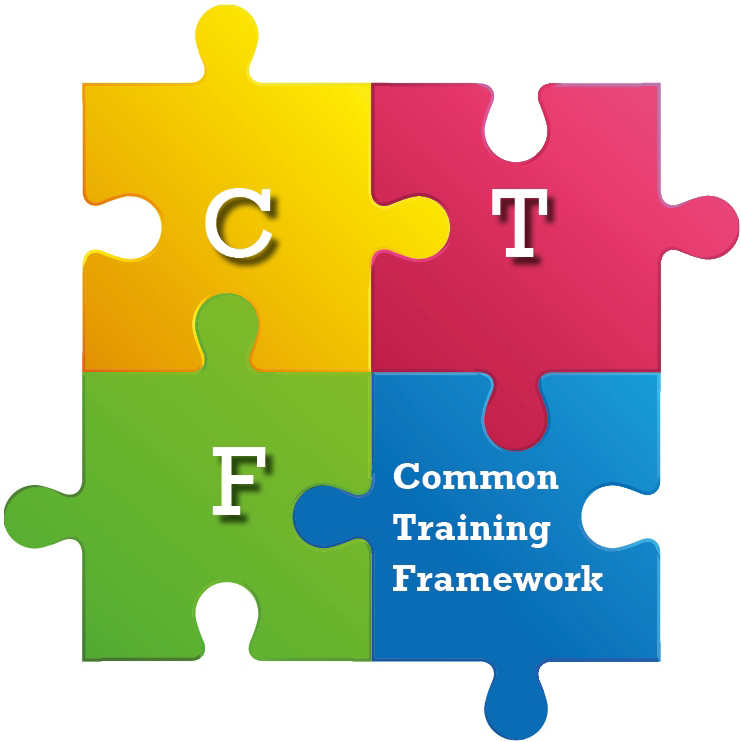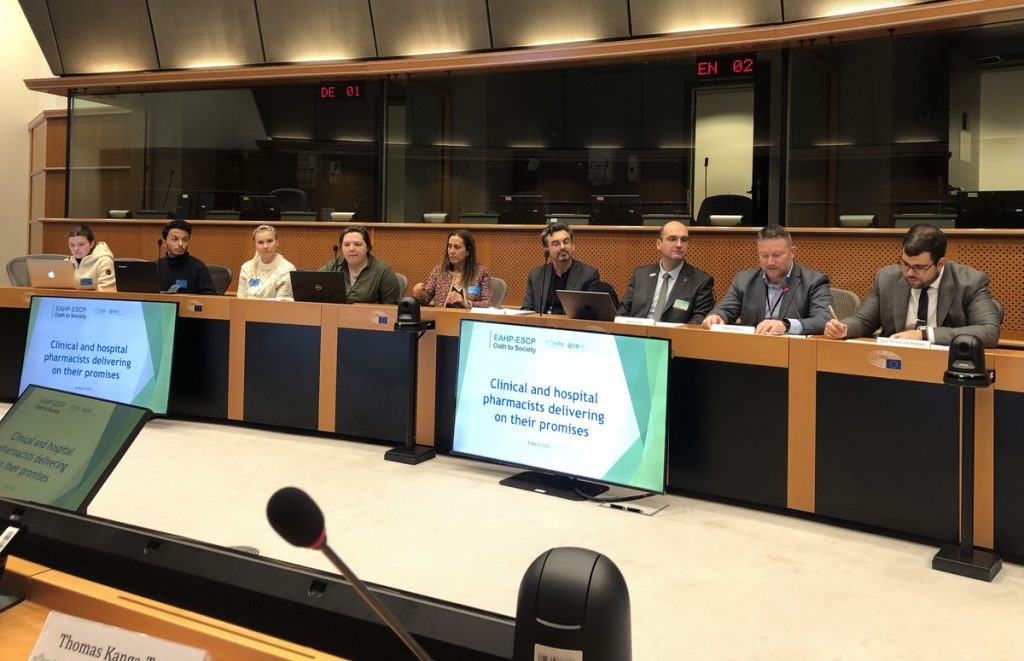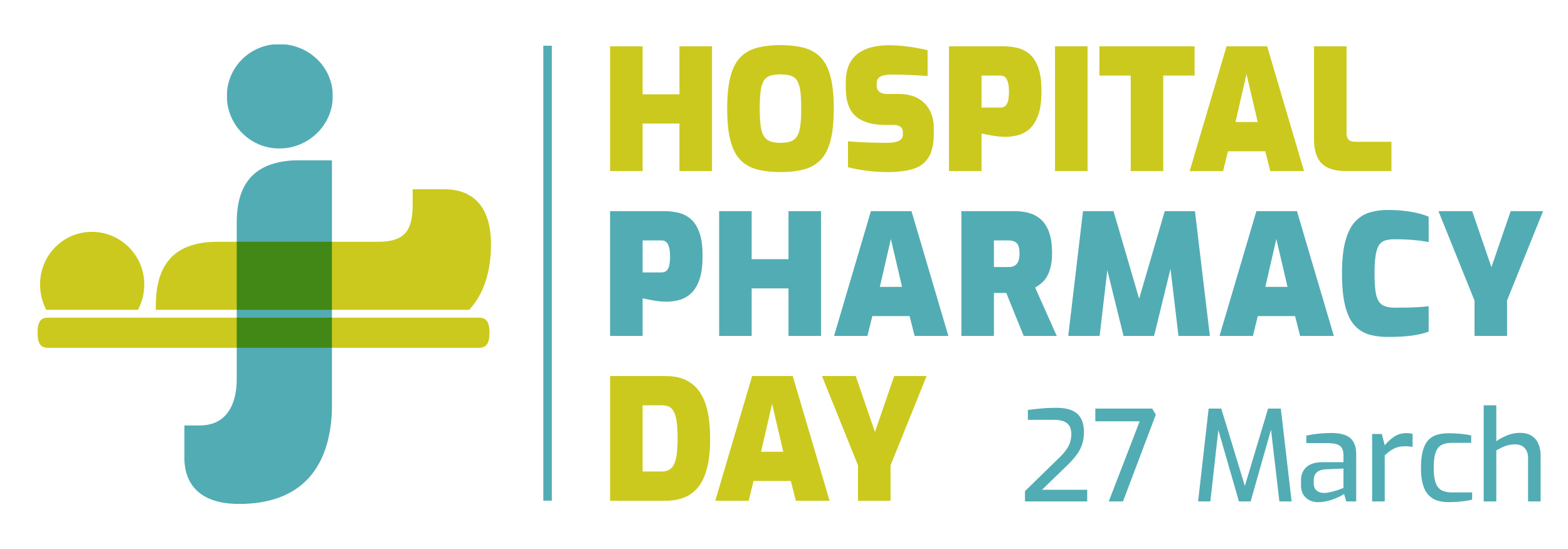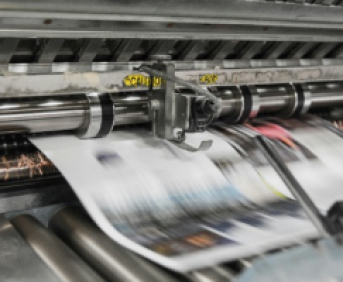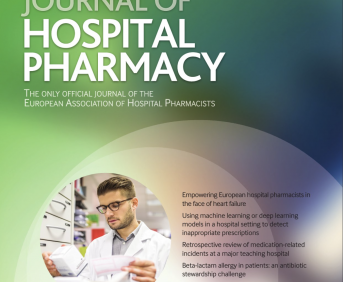IMPLEMENTATION OF AN ATYPICAL MEDICATION ROOM TO OPTIMIZE MEDICATION MANAGEMENT AND REDUCE WASTE AT HERLEV GENTOFTE HOSPITAL, DENMARK
Pdf

European Statement
Clinical Pharmacy Services
Author(s)
Henrik Kjer, Christina Laustsen, Rasmus Riis, Caroline Rasmussen, Jeanette Bajrami, Christian Rubek, and Steffen Jørgensen
Why was it done?
An atypical medication room (AMR) was established at Herlev Gentofte Hospital, Denmark to centralize the storage and handling of medications not part of the standard assortment (i.e. atypical medication). The project aimed to improve the efficiency of medication management, reduce medication waste, and streamline workflows associated with the use of atypical medicines. To enhance the accuracy and efficiency of inventory control, the ScanPill technology was developed as a tool for digital tracking and updating of medication stock.
What was done?
Atypical medications are often stored across various departments with low turnover, leading to potential waste and time-consuming retrieval processes. Centralizing these medications in an AMR and using ScanPill aimed to reduce waste due to expiry, improve stock management, and simplify medication retrieval for healthcare professionals.
How was it done?
Atypical medications from multiple departments were collected and stored in the AMR. The ScanPill system was developed to facilitate the scanning of QR codes and barcodes on medication packaging, allowing for precise tracking of stock levels and easy updates to the atypical medication list. Staff were trained to use the AMR and ScanPill to ensure smooth transitions in retrieving, returning, and documenting atypical medicines. Regular inventory checks and updates were conducted to maintain an accurate database of available medications.
What has been achieved?
The AMR, supported by ScanPill, led to improved handling and management of atypical medications. The centralized storage reduced the need for duplicate stock across departments and enabled quicker access to necessary medications, reducing retrieval time and potential waste. The ScanPill technology improved inventory accuracy and streamlined the process of checking medication in and out, ensuring up-to-date records. Staff feedback has been positive, noting enhanced workflow efficiency and reduced medication waste.
What next?
Future steps include evaluating the economic impact of the AMR and its effectiveness in reducing medication waste. Efforts will be made to refine the use of ScanPill, enhance staff training, and explore potential applications of the AMR model across other departments. Continuous monitoring will ensure optimal performance and identify further areas for process improvement.
A HOSPITAL MEDICATION EXCHANGE SYSTEM – AN INVESTIGATION OF WASTE AND ECONOMIC IMPACT
Pdf

European Statement
Selection, Procurement and Distribution
Author(s)
(NFR) Nathalie Fogh Rasmussen
(MS) Maja Schlünsen
(JHPR) Joo Hanne Poulsen Revell
(LJK) Lene Juel Kjeldsen
Why was it done?
Exchanging medication stocks between hospital wards is a common method for reducing pharmaceutical waste at hospitals. However, the impact of such systems is unclear. Therefore, we aimed to calculate the annual economic cost savings after the establishment of a medication exchange system at the University Hospital of Southern Denmark in Aabenraa.
What was done?
A medication exchange system at a Danish hospital was evaluated according to avoidance of medication waste and potential economic impact.
How was it done?
For two weeks in February 2024, pharmaconomists registered all medications that were exchanged between six hospital wards representing 147 of 302 hospital beds. The quantity of the excess medications when returned was registered and the amount of pharmaceutical waste was calculated. This was compared to the amount of waste incurred by ordering a whole package for the ward. Moreover, the economic cost was calculated based on the value per package and compared to the economic costs of purchasing whole packages.
What has been achieved?
In total, 244 exchanges were registered. The pharmaceutical waste was estimated to 13-26%. The Department of Pulmonary Diseases, followed by the Department of Gastrointestinal Diseases, caused the greatest waste. The exchanged medicine had an economic cost of 3,566 DKK (478 euro). In comparison, the cost of purchasing whole packages was estimated to 21,042 DKK (2,822 euro). Thus, the total cost saving was ((21,042-3,566 DKK)x(52/2 weeks)=454,376 DKK (60,935 euro), corresponding to ((454,376/147) x 302)= 933,480 DKK (125,146 euro) for the entire hospital. The results led to establishment of a physical medication room to store the excess medication available for other clinical wards. All medications are registered electronically to support optimal use of excess medication throughout the hospital.
What next?
The economic evaluation may be replicated for comparable medication exchange systems at other hospitals, and thus, generate evidence for the economic and environmental impact of the system.
TRANSFORMING PHARMACY WORKFLOWS: APPOINTMENT-BASED CARE FOR ONCOLOGY AND HAEMATOLOGY PATIENTS
Pdf

European Statement
Patient Safety and Quality Assurance
Author(s)
ESTEBAN ALONSO, M TERESA; RODRIGUEZ FERNANDEZ, ZULEMA; ALAMO GONZALEZ, OLGA; GUTIERREZ FERNANDEZ, ISABEL; SANCHEZ LUQUE, LAURA; MARTINEZ TOMAS, PAULA; BENITO JUEZ, PILAR; ESPINOSA GOMEZ, M PAZ; GUEMES GARCIA, MAGDALENA.
Why was it done?
This initiative was arose from the need to improve the quality of pharmaceutical care (PC) and stock management to ensure adequate coverage for patients. Without appointments, it was challenging to align consultations with individual patient needs and to prepare medications for the time until the next visit, as patients arrived irregularly. Additionally, multiple patients on the same treatment would often visit on the same day, increasing the risk of stock shortages. This unpredictability led to inefficiencies in both patient care and stock management. The goal was to ensure a smoother patient flow, enhance PC quality, and improve stock control through scheduled visits.
What was done?
An initiative was developed to introduce a scheduled appointment system for Oncology and Hematology patients who need to collect medication from the hospital pharmacy. Previously, patients arrived without appointments, causing unpredictable patient flow and difficulties managing stock. The new system schedules patients around one hour after their medical consultations, with special arrangements for those on long-term stable treatments.
How was it done?
The main challenge was integrating the new appointment system into existing workflows in Oncology and Hematology. Close coordination between pharmacy staff, clinicians, and administrative personnel was essential. Patients were scheduled to pick up their medication around an hour after their consultations. Long-term patients, who need consultations every six months or more, were scheduled during less busy times, such as early mornings. This improved workload management in the pharmacy, ensuring more efficient and higher quality patient care. Effective communication with patients was key to overcoming early hesitation.
What has been achieved?
The system has resulted in a more predictable patient flow, leading to better PC quality through improved preparation and more efficient medication use, reducing shortages and surpluses. Patients now receive more personalized care, as workload is more balanced.
What next?
This initiative serves as an example of good practice, transferable to other hospital pharmacies and healthcare settings facing similar challenges. The next step is to verify patient satisfaction through surveys
GOOD PRACTICES TO MINIMIZE PHARMACEUTICAL WASTE IN HOSPITALS
Pdf

European Statement
Selection, Procurement and Distribution
Author(s)
SS Suvi Sivula, JN Jonna Niemi, KM Konsta Malmi, EA Elina Ahomäki
Why was it done?
In 2021, over 110,000 kilograms of pharmaceutical waste was produced at HUS Helsinki University Hospital, Finland (HUS). That was almost 2.5 million euros when the value of the medicines and the pharmaceutical waste management costs were considered. In 2022, HUS Pharmacy launched a project to reduce pharmaceutical waste, both for economic and environmental reasons.
What was done?
The goal was to reduce the annual pharmaceutical waste in euros and in kilograms at HUS, primarily at the Pharmacy. We also aimed to help departments to reduce their pharmaceutical waste.
How was it done?
The project group was formed of about 15 pharmacists and pharmacy technicians from different units of HUS Pharmacy, located in different areas in Southern Finland. The project team met monthly to review the costs and causes of pharmaceutical waste at the Pharmacy. The team discussed challenges, shared good practices and came up with ideas. In addition, departments were supported in reducing pharmaceutical waste with lectures, materials, videos etc.
During the project we found three main reasons for producing pharmaceutical waste: expired products, residues of cytotoxic drugs and compounding errors. To avoid these, we created a better overview on the whole stock of the Pharmacy, internal communication was increased, and products were moved more actively between units. Unit-specific procedures were also developed, collaboration with departments was increased, and published studies were used especially to reduce cytotoxic waste.
What has been achieved?
During the project, the annual value of wasted pharmaceuticals at the Pharmacy decreased from 928,000 euros (year 2021) to 507,000 euros (year 2023). In addition, the annual amount of pharmaceutical waste at HUS reduced from 112 000 kilograms to 101 000 kilograms. Also, the total cost of pharmaceutical waste at HUS, including the value of wasted pharmaceuticals, decreased.
What next?
The project team’s work has become a permanent part of our work instead of a project.
Collaboration between all healthcare workers is in a key role for reducing pharmaceutical waste. Waste cannot be completely avoided, but it can be reduced significantly, as our project has revealed.
Procedures must be developed further, for example early notifications from departments to the Pharmacy about changes in medical practices are critical for managing our stock.
Centralised DataMatrix reading for drug authenticity verification
European Statement
Selection, Procurement and Distribution
Author(s)
Leonor Romero, Paloma Lozano, Veronica Canales, Vanesa Dechado, Marta Puebla, Ricardo Villarubia, Isamar Gomez, Estefanía Ramírez, Juan Rodríguez, Belén Soto
Why was it done?
According to Directive 2011/62/EU, one of the measures is the inclusion in the secondary packaging of the drug of a Unique Identifier that allows the recognition of a unitary case at any point in the supply chain until it is dispensed to the patient. Another is the development of a European repository that allows the traceability of medicinal products for human use within the European market. In Spain, in accordance with Article 84.1 of Royal Decree 717/2019 of 5 December 2009, the SNSFarma Node was established as an instrument for technological integration and information exchange with the national repository known as the SEVeM.
What was done?
The logistics company of our hospital aggregates several codes corresponding to the Datamatrix of the individual containers in an electronic file, in order to send the reading automatically to Spanish Medicines Verification System (SEVeM).
How was it done?
The shipment of the drugs and the electronic file will be linked by the Seria Shipping Container Code (SSCC), which will univocally guarantee traceability between the two. The Pharmacy Service staff receive the delivery notes by reading the barcode without the need to scan the Datamatrix of each container.
Since the implementation of this project between July 2023 to September 2023, a total of 61 delivery notes have been registered under the code aggregation system with 27 suppliers involved. The number of packages read was 2151.
What has been achieved?
This project ensures the automatic sending of readings to SEVeM and to facilitate the reception of delivery notes at the Pharmacy Services by barcode reading.
This has allowed pharmacy staff to save time in receiving delivery notes, to improve traceability of batches and expiry dates of medicines, to improve stock control thanks to the confirmation of quantities received and to verify the medicines in accordance with European regulations to fight medicine falsifications and ensure that medicines are safe and that the trade in medicines is rigorously controlled.
What next?
A limitation is the existence of suppliers that are not involved in this project since their delivery is not done through the logistics company. In these cases, the datamatrix reading must be performed on each container individually.
Setting up automated dispensing cabinets in a cardiac surgery intensive care unit: what impact for the nursing team and the pharmacy?
Pdf

European Statement
Selection, Procurement and Distribution
Author(s)
MARIANNE DE LACROIX DE LA VALETTE
Why was it done?
Managing medications in hospitals is both a health and an economic issue.
Hospital pharmacists are working to improve supply, traceability, safety and stock management in order to meet these challenges.
Healthcare staff must be able to administer the medications prescribed to patients in complete safety, with the products available at the time of order. The management of medications within the department represents a significant amount of time that needs to be reduced.
What was done?
The objective of this study was to analyse the impact of deploying automated dispensing cabinets (ADC) in a cardiac surgery intensive care unit within a university hospital in France.
How was it done?
In 2022, an on-site study was conducted in the cardiac intensive care unit (18 beds) at Rennes University Hospital. The aim was to quantify the time allocated to manage medications before and after the installation of the automated dispensing cabinet.
Several types of measurable metrics were identified and compared. These include picking time for nurses of medications for administration to the patient; time allocated for ordering and storing medications; time to respond to emergency orders; management of narcotics; and time in the management of expired medications.
What has been achieved?
A comparison of the pre and post installation of the automated dispensing cabinet showed nursing time savings in the picking of controlled drugs of 53%. Overall restocking time was decreased by 9%. The number of urgent order requests to pharmacy was decreased by 51%.
The time allocated towards removing expired medications was reduced by 3.8 days / year (nurse FTE). Lastly, the implementation of automated dispensing cabinets reduced the value of the department’s stock by 26%.
What next?
The time spent by nurses in managing medications was significantly reduced after the installation of automated dispensing cabinets. However, some of this time is transferred to the central pharmacy towards restocking the medications into the automated dispensing cabinets.
The automated dispensing cabinets makes it possible to monitor the stock of medicines in a department on a daily basis. This enables for data driven decision making on selection of decentralized stock and respective quantities to maintain.
The deployment of automated dispensing cabinets improves overall efficiencies and allows more time for nurses to provide direct patient care.
Designing a specific critical must-have medicine for our hospital
Pdf

European Statement
Selection, Procurement and Distribution
Author(s)
María Isabel Sáez Rodríguez, Marta Eguiluz Solana, Marta Miranda Magaña
Why was it done?
Shortages are common in our setting. Having a list of critical and must-have drugs (CMHD) specifically designed for our centre allows us to reduce risk of complications due to delays in drugs administration.
What was done?
Monitoring and mitigating potential shortages of critical medicinal products and medical devices by redacting a list of critical pharmacy and health products to have in our centre.
How was it done?
First, we conducted bibliographic research, finding official list of CMHD by FDA, EAHP, and AEMPS.
Afterwards, we crossed those lists with the pharmacotherapeutic guide (PTG) in our centre, identifying those drugs that are considered CMHP, and checking their stock.
Discrepancies between the list provided by official agencies and our PRG were evaluated by the clinical pharmacist, taking into account our centre complexity and surroundings, nearby hospitals and type of patients attended.
With our findings, we redacted a list of CMHP specifically designed for our centre.
What has been achieved?
During our revision, we found discrepancies between our PTG and the official lists of CMHD:
• Some medicines, like certain antidotes, were not considered CMHD. These drugs were included in our list, according to intoxications incidence in our area.
• Lack of stock of must-have products in the official list. Some of them, like coagulation factors, were not considered a CMHD in our centre due to their availability in nearby hospitals. Others, like albendazole, were not included due to low incidence of disease they treated.
Evaluating each drug necessity helped us identify certain health emergencies we may come across in our centre, and prepare for them accordingly. Also, stock revision showed us which medicines have suffered from shortages in the past.
Finally, we achieved our main goal of having a specifically designed list CMHD for our centre.
What next?
Doing a revision of must-have products and adapt it to the centre’s situation enables us to have a better stock control, and serves as a back-up in case of shortages. Our CMHD list must be periodically revised, making sure it adapts to any potential changes in our centre’s situation.
Creation of an integrated tool for the control and optimisation of the stock of medication in pharmacy services
Pdf

European Statement
Selection, Procurement and Distribution
Author(s)
BEATRIZ MONTERO LLORENTE, ELENA GEMENO LÓPEZ, CARMEN PALOMAR FERNÁNDEZ, ANA MARÍA ÁLVAREZ DÍAZ
Why was it done?
To avoid stock breaks of medication due to unforeseeable fluctuations in their regular consumption. To reduce claims to the Pharmacy Service (PS) for medication shortages in automated dispensing systems (ADS) and other dispensing circuits. To achieve economic savings by avoiding unnecessary loans. To manage these loans in the morning when needs are detected in advance, with the consequent reduction in the time it takes for the pharmacist to manage it during on-call hours (approximately 2 hours per loan).
What was done?
We designed and implemented a tool to control in advance the stock of medication dispensed to hospitalisation and outpatient units and thus be able to forecast needs based on current prescriptions and associated habitual consumption.
How was it done?
1. An Excel file was developed in which the information on automated storage systems (ASS), ADS and prescriptions were integrated. It included maximum, minimum and current amount, and estimated coverage (in days) according to the consumption forecast associated with current prescriptions. We established the minimum amount based on a coverage threshold of 7 days.
2. Basic drug needs were studied (adjustment of maximum and minimum in the ASS and ADS, a dynamic process periodically reassessed according to demand).
3. The order information was added: order status, request date, last receipt date, order number and laboratory. These items allowed us to quickly locate old orders so we could address the reason for the delay in procurement.
4. We included medications stored externally to the ASS to control their stock electronically.
What has been achieved?
Loans requested annually from other hospitals were quantified as an indicator of improvement in acquiring medicines stored in the ASSs.
We obtained an annual reduction in the number of loans of 34.4% between 2019 and 2020 (125 loans vs 82) and 56.1% between 2020 and 2021 (82 loans vs 36). This result represented an average decrease in the time to manage loans of approximately 7 hours/month between 2019 and 2021.
What next?
The tool can be applied to all PS with ADS and ASS, intending to have the necessary medication available at the necessary time and thus avoid possible clinical damage to patients’ health derived from the delay in their treatment.
IMPLEMENTATION OF A BIGDATA ANALYSIS PROGRAM FOR STOCK MANAGEMENT IN A PHARMACY SERVICE
European Statement
Clinical Pharmacy Services
Author(s)
LUCÍA SOPENA, VICENTE GIMENO, OLGA PEREIRA, Mª ANGELES ALLENDE, RAQUEL FRESQUET, RAQUEL GRACIA, BEATRIZ BONAGA, MERCEDES ARENERE, TRÁNSITO SALVADOR, ALBERTO FRUTOS
Why was it done?
The growing technological development of pharmacy services involves the coexistence of traditional warehouses with automated medicine dispensing systems controlled by different computer programs. The information was splitted into different systems and databases giving rise to possible errors due to the greater complexity.
This is a threat but also an opportunity for the hospital pharmacist to lead the development, review, and improvement of medicine use processes and the use of health technologies.
KNIME data analysis covered the need of our Pharmacy Service to blend data from any source in a single file simplifying the process.
What was done?
The Pharmacy Service of a tertiary-level hospital has implemented Konstanz Information Miner (KNIME) data analysis and treatment program to optimize the stock management of several medicines.
How was it done?
An initial algorithm was designed by the union of 7 files and can be executed at any time to obtain the updated data.
What has been achieved?
This file provides up-to-date information about the stocks, stock-outs, consumptions, orders and purchasing data of all medicines (average price, laboratory, date and number of orders, units to be received).
In addition, KNIME calculated the coverage time from consumption, and the current stock in the warehouses, obtaining a global vision of highest turnaround pharmaceuticals drugs.
The program also allows linking and merging data of the list for shortages of medicines, supply disruptions and restocking time provided by the Spanish Agency of Medicines and Medical Devices (AEMPS).
KNIME program has been especially important in our Pharmacy Service during the pandemic caused by severe acute respiratory syndrome coronavirus 2 (SARS-CoV-2). Big data analysis has allowed the hospital pharmacist to anticipate missing specialties and to make a rapid response in ensuring the availability of Essential Medicines List (EML) composed by 75 proposed by AEMPS and 138 by our hospital (e.g. antiinfectives, analgesics, muscle relaxants, anesthetics).
What next?
KNIME is a tool that could be successfully implemented and appropriately generalized as recommended to all Pharmacy Services that use different data sources, and want to have a generalized view of the information.
KNIME represents an advance in the stock and stockpiling management of medicines specialties to work more efficiently, which improve patient care and safety.
OPTIMIZATION OF DRUG MANAGEMENT
European Statement
Patient Safety and Quality Assurance
Why was it done?
To avoid stock breaks by ensuring at all times the existence of the medicines included in a 2nd level hospital.
What was done?
Optimization of medication management in a Hospital Pharmacy Service (HPS) through the development and use of a purchasing planner.
How was it done?
One obstacle we encountered was knowing the inventory in real time. This required a computer program for stock management, human resources or intelligent warehouses to enable real-time inventory control.
After the training, learning and updating of working procedures, an analysis of the consumption of the drugs included in the pharmacotherapy guide was carried out in order to calculate the minimum stocks, safety stocks, maximum stocks and order points.
Data were loaded into the management software and parameters were defined so that when a drug reached the point of order a purchase proposal would be made until the maximum stock was reached.
What has been achieved?
In February 2020, the purchasing planning system was implemented. The planner’s lists were parameterized to organize the drugs by therapeutic groups or areas of interest within the HPS. In addition, communication among all professionals was enhanced for rapid response to a lack of medication and a periodic inventory counting plan was designed to ensure adequate stock.
After changes, more than 80% of HPS medications are ordered through purchasing planning, reducing stock breaks due to never reaching the safety stock of selected drugs.
What next?
This system is applicable to all HPS that has the same management software. It is necessary to have an optimization system in the drug management to ensure their real stock in the hospital environment and their availability for patients.
